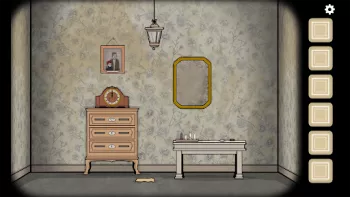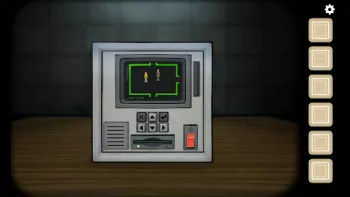Apps Home

The Depths of Historical Mysteries
The exploration of historical mysteries often feels like walking through the shadowy corridors of an ancient mansion, where every creak of the floorboards whispers secrets of times long past. Understanding these mysteries requires us to decipher the cryptic language of archaeological finds, historical documents, and the narratives passed down through generations. Unlike a straightforward timeline, history's enigma often presents itself in fragments: an undeciphered symbol on a tomb, a vanished civilization whose traces linger in the sands of time, or a manuscript filled with indecipherable letters from a lost language. By piecing together these fragments, historians and archaeologists build a mosaic that reveals the stories of our ancestors, their societies, their struggles, and their triumphs. The Rosetta Stone, for instance, was a crucial puzzle piece that unlocked the language of the Ancient Egyptians. Before its discovery, the hieroglyphs remained an inaccessible language locked behind the gates of time. Upon its unearthing, it provided the framework to decode other texts, thus offering insights into the daily life, culture, and belief systems of the Egyptian civilization. Similarly, the Dead Sea Scrolls contain written histories and ideologies that challenge previously accepted historical narratives, providing a glimpse into the religious practices and philosophical exchanges of ancient communities around the Qumran Caves. Technological advancements like ground-penetrating radar and LIDAR have opened up unprecedented possibilities in archaeology, enabling us to discover hidden megaliths and path networks that lie beneath dense forest canopies or desert sands, thus unveiling the concealed grandeur of cities like Angkor Wat and the vast network of Maya civilization that were once thought lost forever. By utilizing these tools, modern historians continue to explore the fabric of ancient enigmas, paving paths to more discoveries in the enigmatic timeline of human history.
Technologies Breathing Life Into the Past
As we journey farther into the corridors of history using the latest technological advancements, we uncover layers of our past filled with depth and detail that once seemed out of reach. Technologies such as 3D imaging, CRISPR, and AI offer avenues to explore historical realities beyond the limits of traditional research methodologies. A compelling example is the advent of 3D imaging techniques, which allow us to create intricate virtual reconstructions of archaeological sites and artifacts, permitting historians to study and interpret these findings without the risk of damaging them. Virtual reality platforms can employ these 3D models to offer immersive experiences, enabling users to 'walk through' ancient cities and interact with artifacts in a digital environment, thus bringing history into classrooms and living rooms around the world. CRISPR technology, while primarily utilized for genetic research, has found its way into archaeological applications as well. By analyzing the DNA extracted from ancient remains, researchers can reconstruct a vast genetic history, tracing migratory patterns and genetic exchanges across different human populations over millennia. AI and machine learning, on the other hand, have become indispensable in processing and interpreting vast datasets of historical records and sites, facilitating breakthroughs in deciphering ancient languages or predicting the sites of buried archaeological treasures. For example, AI algorithms can analyze satellite images to identify soil and vegetation patterns indicative of human settlement remains that lie hidden beneath the surface. Such technologies do not merely assist in uncovering history but actively reconstruct it, breathing life into stories that have been waiting to be told, hidden in the shadows until the right light—technology—illuminates them.
Interactivity and Engagement in Historical Discovery
In the modern era, the world of historical discovery is no longer confined to the realm of academic research or the dusty halls of museums; it has become an interactive and engaging experience accessible to a global audience. This shift is, in no small part, due to the rise of innovative video games and digital experiences like "Unveiling the Hidden Puzzles of the Past," which challenge players to embark on their journeys into history. Such games provide an interactive narrative where players partake in revolutionary virtual co-op adventures. The intertwined narratives allow players to choose between roles—such as living in the Future or delving into the Past—which adds layers of depth to gameplay. For instance, in the game demo by Rusty Lake, participants become investigators of their own, collaborating with a friend to solve period-based puzzles. This cross-platform experience not only introduces players to the thrill of uncovering secrets but also facilitates an understanding of historical context in a cooperative and engaging manner. The tactile aspect of solving puzzles in a virtual or augmented reality framework immerses players in history, enabling them to explore themes and solve problems as they were presented to our ancestors. The challenges offer a fresh perspective on history, asking players to think critically and empathetically about the past as they navigate these captivating worlds. By incorporating an atmospheric soundtrack specially composed for these experiences, creators add an auditory depth to the narrative, enhancing immersion and allowing history to transcend the boundaries of time and medium.
Cross-Platform Coop Adventures: Bridging Time and Space
The phenomenon of cross-platform cooperative adventures has transcended mere gaming and become a conduit for educational and historical engagement. "The Past Within" is a prime example of this, transcending traditional single-player experiences to harness the power of connectivity between different devices and platforms. It stands at the intersection of cooperative strategy and time-traveling lore, inviting players to participate in a shared challenge the echoes across time constraints. This approach allows players on disparate devices to combine their perspectives to tackle intricate puzzles, stimulating teamwork and communication—the very essences of successfully unraveling complex historical riddles. The ability to switch roles invites a duality of experience; players gain a deeper understanding of both present and past contexts, while fostering an appreciation for the continuity of history. It blurs the distinctions of distance and device, offering a seamlessly integrated experience that replicates the fluidity of history itself. The integration of an immersive soundtrack composed by Victor Butzelaar further enriches the atmosphere, forming an audio bridge that connects players emotionally to the game world, highlighting the similarities and differences between periods with every motif and note. As history is often understood as a tapestry woven with threads from countless narratives, a cross-platform cooperative model enhances this perspective by creating a shared space where the historical narrative can be constructed collectively and dynamically, empowered by the collaborative efforts of players themselves connecting across the temporal, spatial, and digital divide.
The Future of Historical Exploration
As we venture into the future of historical exploration, the possibilities seem limitless. The boundary between the present and the past continues to blur, as technology serves as the linchpin that connects them. The evolution of experiences in games like "Unveiling the Hidden Puzzles of the Past" represents a new frontier in our understanding and interaction with history. Developers are beginning to harness the potential of AI-driven narrative engines that adapt historical content according to player choices, leading to truly personalized historical adventures. Despite this, the ethical considerations of these developments loom large; the accurate representation of cultural heritage, respect for historical narratives, and the potential trivialization of complex histories due to oversimplification pose significant challenges. However, these challenges also present opportunities to educate, engage, and stimulate dialogue on the importance of preserving our historical narratives for future generations. Embracing emerging technologies while adhering to ethical and educational standards will be pivotal to the continued success of digital historical exploration. As this field evolves, it will undoubtedly open new channels for interdisciplinary collaboration among historians, technologists, education professionals, and cultural stewards. As participants in this ever-expanding digital narrative, we are not merely observers of history anymore; we are participants actively shaping and reshaping humankind's understanding of its own past. Engaging with history in this multi-layered and dynamic medium ensures that the stories of our ancestors continue to resonate within us, inspiring new generations of explorers and scholars to unlock the sealed doors of history. For those eager to embark on this journey, the demo version of this adventure awaits: Download for Android.
Share Your Opinion
Your Email Will Not Be Published.
All Rights Reserved © Apps Home 2025






























Emi Haridan
I had fun. It was really interesting and hard to play with your friend in LDR. We got confused as a result and try to communicate better. I absolut...
C S
I'm such a huge fan of the Rusty Lake series but admittedly the puzzles sometimes are a huge head scratcher and I absolutely hate peeking behind th...
K9L
Currently playing the full version with my bestfriend, ABSOLUTELY AMAZING! All the puzzles are so awesome and we laugh so much when we try giving e...
nature inlens
The best riddle game i have ever played, damn rusty lake sure did give their best. The graphics were absolute marvelous with each scenes with true ...
hakdoki not taken
Me and my friend had fun! We played this at 11pm and honestly it had an eerie vibe which scared both me and my friend at the same time. The experie...